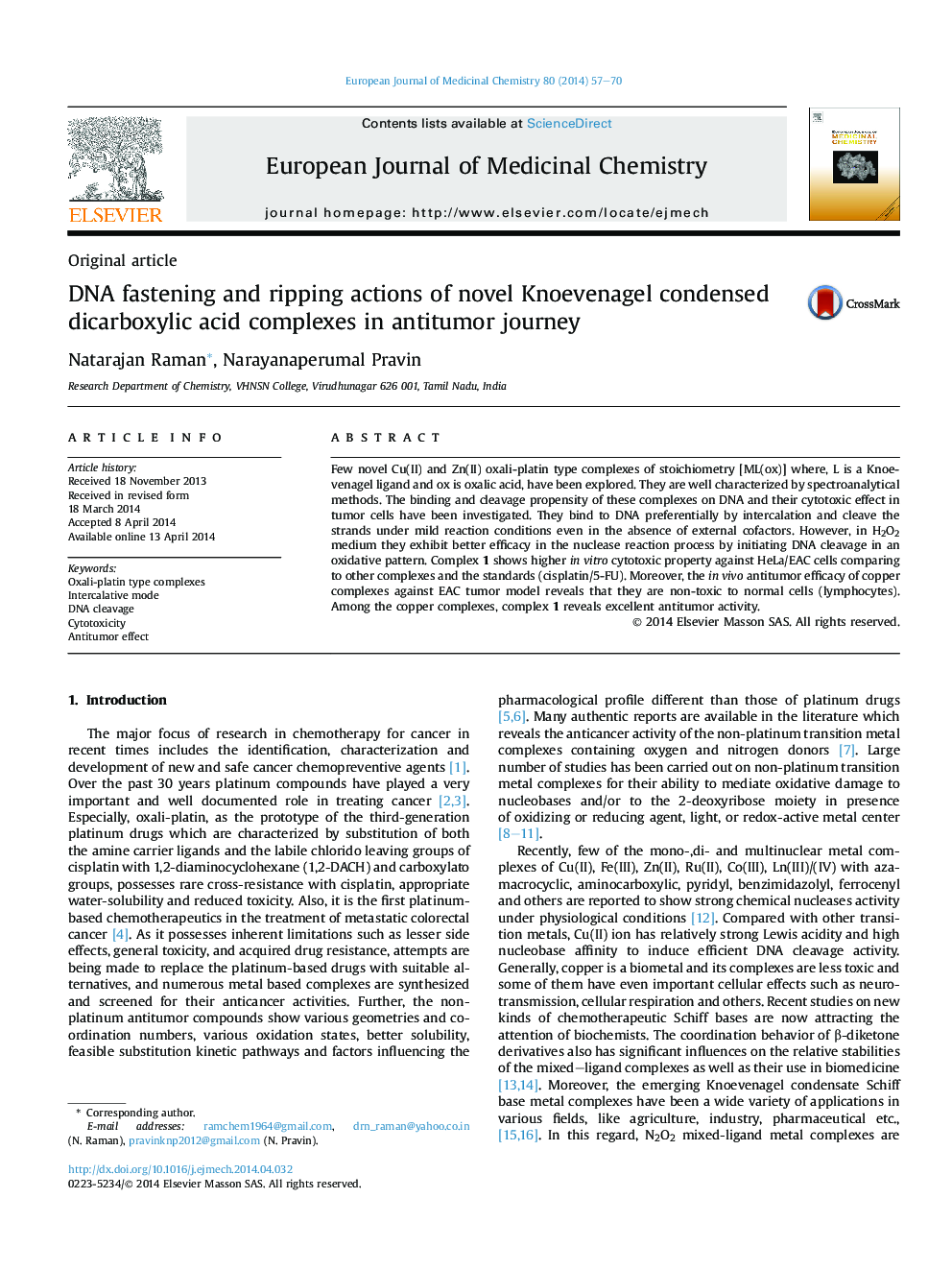| Article ID | Journal | Published Year | Pages | File Type |
|---|---|---|---|---|
| 1394089 | European Journal of Medicinal Chemistry | 2014 | 14 Pages |
•Synthesis of oxali-platin type mixed ligand complexes.•DNA unwinding effect as well as self-activating nucleases.•Remarkable antimicrobial activity against several microorganisms.•Copper(II) complexes act as promising antitumor agents.
Few novel Cu(II) and Zn(II) oxali-platin type complexes of stoichiometry [ML(ox)] where, L is a Knoevenagel ligand and ox is oxalic acid, have been explored. They are well characterized by spectroanalytical methods. The binding and cleavage propensity of these complexes on DNA and their cytotoxic effect in tumor cells have been investigated. They bind to DNA preferentially by intercalation and cleave the strands under mild reaction conditions even in the absence of external cofactors. However, in H2O2 medium they exhibit better efficacy in the nuclease reaction process by initiating DNA cleavage in an oxidative pattern. Complex 1 shows higher in vitro cytotoxic property against HeLa/EAC cells comparing to other complexes and the standards (cisplatin/5-FU). Moreover, the in vivo antitumor efficacy of copper complexes against EAC tumor model reveals that they are non-toxic to normal cells (lymphocytes). Among the copper complexes, complex 1 reveals excellent antitumor activity.
Graphical abstractFew novel oxali-platin type metal chelates have been designed and synthesized to evaluate their in vitro and in vivo antitumor activities. They can act as efficient self-activating nucleases.Figure optionsDownload full-size imageDownload as PowerPoint slide
